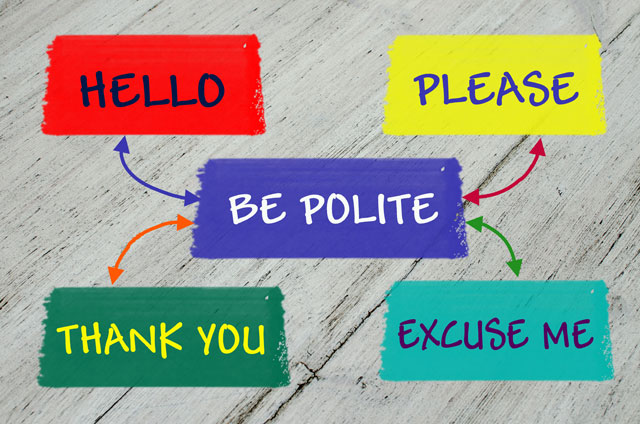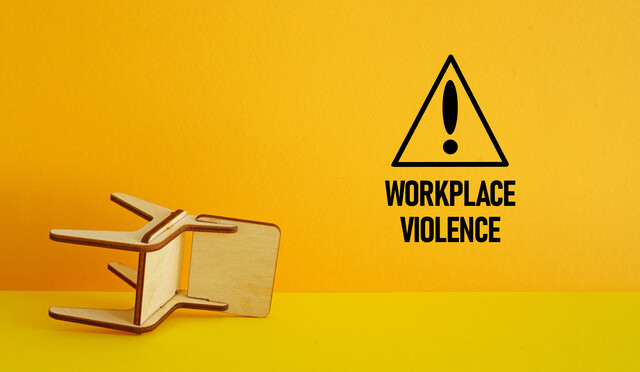-
Physical hazards -
Environmental hazards -
Chemical hazards -
Biological hazards -
Thermal injury -
Radiation injuryFull body suits come in:� Full body suits� Jacket and trouser combinations� Jacket and overall combinations � Coveralls
Complete suits include the "chemsuit" or the NBC suit, which stands for "Nuclear, Biological and Chemical suit) that protects the wearer from radioactive contamination, biological or chemical substances, depending on the design of the suit. It is the military equivalent of the Hazmat Suit. It is used in the armed services and in the health and safety industry as a defense against weapons of mass destruction, including the cleanup after a terrorist attack. It is also used in some industrial industries to clean up after industrial accidents. Such NBC suits are intended to be worn over a military uniform and are made from impermeable rubber, although some also use a filter that allows air and sweat to slowly pass out of the suit. The British equivalent of the NBC suit is called a "Noddy suit". The Soviet equivalent is known as the "Womble Suit" and consists of a suit with an attached respirator and visor glasses. In Canada, such suites are known as "Bunnysuits".
A Hazmat Suit is defined and used by the US Department of Homeland Security. It protects the individual against chemicals, biological hazards and radioactivity. Protection against chemical agents occurs through the use of Teflon, heavy PVC, Tyvek or rubber. There is radiation shielding through the lining of the material and a respirator protects against inhaling radioactive particles or gaseous agents. The Hazmat suit is fully sealed so as to protect the individual from biological substances. It uses insulating and reflecting material to protect the wearer from fire or high temperature exposure.
Hazmat suits used in the laboratory have extended-use air hoses so that the wearer doesn't have to wear a tank. The air is pumped using positive pressure to prevent agents from entering the suit if it should leak or become ruptured. Hazmat suits are difficult to work in as they are not very flexible and are somewhat heavy. Use is generally limited to 2 hours of time, depending on the level of work required. Hazmat suits have three different rating levels:
� Level A suits are completely vapor-tight and provide total encapsulation of the wearer against any direct or airborne chemical contact. They often have a self contained breathing apparatus (SCBA) enclosed within the suit.
� Level B suits are not vapor-tight and are worn with SCBA gear inside or outside of the suit. It offers a less level of protection.
� Level C suits include the use of coveralls or splash suits that provide the least level of protection. They are worn with a gas mask or a respirator.
� Level D suits are technically not Hazmat suits but require only specific protective garments and eye splash protection.
Hazmat suits come in two variants: splash protection and gastight suits. Splash protection suits primarily prevent the individual from coming in contact with a dangerous liquid but do not protect against dusts and gases.
Materials used in Garments
� Woven or unwoven knit textiles
� Leather materials
� Rubber materials
� Rubber fabric
� Plastic materials
� Plastic fabrics
They are often lined by fabric that wicks away body perspiration as well as barrier materials to prevent the penetration of liquids or batting materials that protect against severe heat or cold.
� Snapped
� Hook and eyed
� Zippered
� Two-track closed
� Hooked and loop taped
� Physical exposure
� Environmental exposure
� Chemical exposure
� Biological exposure
� Thermal hazards
� Electrical exposure
� Hoods, head covers or bouffants
� Aprons, gowns, smocks, lab coats and vests
� Sleeve protectors
Ballistic or "bullet proof vests" are items of personal protective equipment used in the military, security industry and in law enforcement which prevent impact from firearm-fired bullets and sharp shrapnel used in explosives. The protection is primarily for the torso of the wearer. There are today soft vests created from many layers of laminated or woven fibers that protect the wearer from small hand grenades, handgun bullets and shotgun bullets. In some cases, there are metal and ceramic plates embedded inside the soft vest which protect the wearer from rifle fire. Soft armor can also protect the wearer from slashing or stabbing by a knife or other sharp object. Soft vests are normally worn by private citizens and security guards, while hard-plate reinforced ballistic vests are worn by combat soldiers and the police force, especially SWAT teams.
Ballistic vests utilize layers of very strong fibers that catch and deform a bullet, spreading its force across larger areas of the vest. The vest absorbs the energy of the bullet, bringing it to a stop before it can penetrate the complete matrix. Some fibers may be penetrated but they deform the bullet, absorbing the energy of the bullet. The wearer may still experience a sort of blunt force trauma but don't have the penetration of the bullet.
Vests have specifications that include both the penetration resistance and limits on the amount of impact energy that can be safely delivered to the body. Vests designed for impact resistance against bullets are poorly protective against sharp objects, like knives or from bullets with a non-deformable core, such as steel. Textile vests are therefore augmented with steel, ceramic, titanium or polyethylene plates that provide extra protection to the body's vital areas. They have been proven to be protective against a range of handgun and rifle bullets. Such vests are of particular use in the military, while vests signed to protect against slashing injuries are popular in the corrections industry.
HISTORY OF BALLISTICS VEST
Bullet-proof vests existed as early as 1538, when Francesco Maria della Movere had a bullet-proof vest commissioned. A similar vest was used in the Holy Roman Empire, also in the 16th century. These were hard, forged vests that dented when a bullet struck it.
In the 1800's, a bullet-proof vest was used shortly after the French fought the Koreans in the 1860's. It was discovered that a bullet-proof vest could be made from cotton, if enough layers were used to create the vest. Ballistic armor using scrap metal was used by a gang of Australian outlaws led by Ned Kelly which covered their torsos, upper arms, and upper legs, and was used with a metal helmet. The suits weighed 96 pounds and made the gang too clumsy during a police raid and were found to be useless as lower leg protection.
Silk vests were invented in the US in the early 1800's, using 18-30 layers of silk cloth, resembling the medieval variety of ballistic vest. Dr. George Emery Goodfellow got the idea after learning about several cases of individuals who survived bullet impacts after wearing silk. An actual silk bullet-proof vest was manufactured at the end of the 1800's, which had the ability to stop rounds of bullets from a handgun. A silk vest was worn by Archduke Franz Ferdinand of Austria n 1914; however, the bullet shot him in the neck and was not protected from the vest.
In WWI, chrome nickel steel Brewster Body Shields were worn by solders but was clumsy and weighed up to 40 pounds. It consisted of a breast plate and a head piece and was much heavier than a similar waistcoat that had overlapping steel scales and a fixed leather lining, which weighed 11 pounds.
In WWII, the US designed infantry body armor that was, for the most part, too heavy and clumsy to wear. Flak jackets were developed for airmen that were designed to stop the damage from shrapnel, made of nylon fabric. They were not designed to stop bullets. Later in WWII, the US developed more practical vests of several different kinds and styles.
Newer vests were designed for the Korean War, including those made of fiber-reinforced plastic or aluminum segments woven together into a nylon vests. While they were lightweight, they did not stop bullets or shrapnel very effectively. The first ceramic plate vests were introduced in 1967 and were capable of stopping 7 mm rifle rounds. They were made of boron carbide, silicon carbide, or aluminum oxide and were used by pilots and crew of low-lying aircraft in the Vietnam War. By 1969, the American Body Armor Company produced vests which were a combination of quilted nylon aced with several steel plates. Such vests were marketed under the name of "Barrier Vests". It was also used widely in police operations.
By the mid 1970's, Kevlar was developed and was woven and layered inside body armor. It was determined that such Kevlar vests could be comfortably and safely worn by the police. In 1975, an all-Kevlar vest consisting of fifteen layers of Kevlar and a ballistic steel "Shok plate" was placed over the heart. Such vests were easily concealable. Used by the police, over 2,000 police vest "saves" had been documented by 2006. While Kevlar was lightweight and concealable, it did have its flaws. It didn't work if large fragments or high velocity bullets hit the vest and it could cause blunt force trauma when the victim as hit.
Ranger Body Armor was used in the military in 1991 and was able to stop rifle caliber rounds while still being lightweight enough to be comfortable. It was a bit heavier than the PASGT (personal armor system for ground troops) that was concurrently issued to troops and did not have the neck or shoulder protection that the PASGT device was able to accomplish.
The newest armor includes the Interceptor Body Armor, The Outer Tactical Vest and the more advanced Marine Corp Modular Tactical Vest. They all consist of hard ceramic plates such as the small arms protective insert that protect the vital organs.
PERFORMANCE STANDARDS
Bullet-proof vests vary in the degree to which they protect against various types and weights of bullets and whether or not they protect against slashing injuries. This means there must be body armor standards, which, as of this time, are regional standards. There are a few standards that are widely used throughout the world. The US National Institute of Justice have accepted standards as does the UK's Home Office Scientific Development Branch. These model standards are used by other countries as well. The following is an example of a ratings scale that can protect a wearer from danger:





























